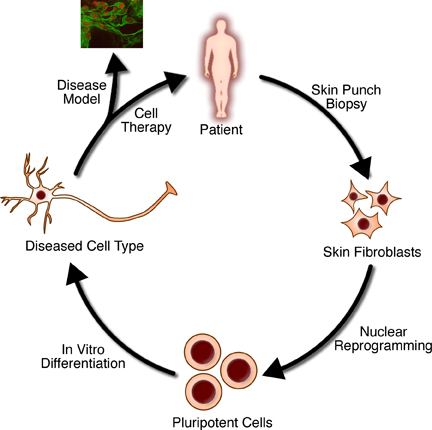Regenerative Medicine: Harnessing the Body's Healing Potential
What is Regenerative Medicine?
Regenerative medicine is a rapidly evolving field that focuses on the development of innovative therapies to repair, replace, or regenerate damaged or diseased tissues and organs. By harnessing the body's innate healing capabilities, regenerative medicine aims to restore normal function and improve patient outcomes. This interdisciplinary field combines principles from biology, engineering, and medicine to create cutting-edge treatments for a wide range of conditions.

Key Strategies in Regenerative Medicine
Regenerative medicine employs several key strategies to promote tissue repair and regeneration:
Stem Cell Therapy
Stem cells are unspecialized cells with the unique ability to differentiate into various cell types and self-renew. In regenerative medicine, stem cells are used to replace damaged or lost cells and promote tissue regeneration. Stem cells can be derived from various sources, including embryonic stem cells, adult stem cells (e.g., mesenchymal stem cells), and induced pluripotent stem cells (iPSCs). By harnessing the potential of stem cells, researchers can develop cell-based therapies for a wide range of conditions, such as heart disease, diabetes, and neurodegenerative disorders.
Tissue Engineering
Tissue engineering involves the creation of functional tissues or organs using a combination of cells, scaffolds, and growth factors. The goal is to mimic the structure and function of native tissues and provide a suitable environment for cell growth and differentiation. Scaffolds, which can be made from natural or synthetic materials, serve as a temporary support for cells and guide tissue formation. Growth factors and other signaling molecules are used to stimulate cell proliferation, migration, and differentiation. Tissue engineering has applications in the repair and replacement of damaged tissues, such as skin, cartilage, and bone.
Gene Therapy
Gene therapy involves the introduction of genetic material into cells to correct or modify gene expression. In the context of regenerative medicine, gene therapy can be used to deliver genes that promote tissue repair, stimulate cell growth, or inhibit disease-causing processes. By modifying the genetic makeup of cells, researchers can enhance their regenerative capabilities or correct genetic defects that contribute to disease. Gene therapy has shown promise in the treatment of various genetic disorders, as well as in the regeneration of tissues such as the retina and the nervous system.
Immune Modulation
Immune modulation plays a crucial role in the success of regenerative medicine therapies, particularly in the context of cell and tissue transplantation. The immune system can recognize transplanted cells or tissues as foreign and mount an immune response, leading to rejection and failure of the therapy. To overcome this challenge, researchers are developing strategies to modulate the immune system and promote tolerance to the transplanted cells or tissues. This can be achieved through the use of immunosuppressive drugs, the engineering of immune-privileged cells, or the induction of immune tolerance through the manipulation of regulatory T cells. By effectively modulating the immune response, regenerative medicine therapies can achieve long-term survival and function of the transplanted cells or tissues.
Applications of Regenerative Medicine
Regenerative medicine has a wide range of potential applications in the treatment of various diseases and injuries:
Cardiovascular Diseases
Regenerative medicine approaches, such as stem cell therapy and tissue engineering, are being explored for the treatment of cardiovascular diseases. For example, stem cells can be used to regenerate damaged heart muscle following a heart attack, while tissue-engineered blood vessels can replace blocked or narrowed arteries. These strategies aim to restore normal heart function and improve patient outcomes.
Neurological Disorders
Regenerative medicine holds promise for the treatment of neurological disorders, such as Parkinson's disease, Alzheimer's disease, and spinal cord injuries. Stem cell-based therapies can be used to replace lost or damaged neurons and promote neural regeneration. Gene therapy approaches are also being investigated to deliver neuroprotective or regenerative factors to the nervous system. By restoring normal neural function, regenerative medicine aims to improve the quality of life for patients with neurological disorders.
Orthopedic Conditions
Regenerative medicine has applications in the treatment of various orthopedic conditions, such as osteoarthritis, bone fractures, and cartilage defects. Stem cell therapies and tissue engineering approaches can be used to regenerate damaged cartilage, repair bone defects, and promote healing of ligaments and tendons. These strategies aim to alleviate pain, restore joint function, and improve patient mobility.
Challenges and Future Perspectives
While regenerative medicine holds immense potential, several challenges need to be addressed for its widespread clinical application. One of the main challenges is the scalability and reproducibility of regenerative therapies. The production of high-quality stem cells and tissue-engineered constructs requires precise control over cell culture conditions, biomaterial properties, and manufacturing processes. Ensuring the safety and efficacy of regenerative therapies is another critical concern, as the long-term effects of these treatments are not yet fully understood. Additionally, the development of effective immune modulation strategies is crucial for the success of cell and tissue transplantation therapies.
Future research in regenerative medicine will focus on the development of more advanced biomaterials, improved cell-based therapies, and innovative gene editing tools. The integration of technologies such as 3D printing, microfluidics, and artificial intelligence will enable the creation of more sophisticated and personalized regenerative therapies. Moreover, the exploration of novel strategies for immune modulation, such as the use of biomaterials with immunomodulatory properties or the co-delivery of immunosuppressive agents, will further enhance the success of regenerative medicine therapies.
Further Reading
International Journal of Molecular Sciences, Critical Overview on Regenerative Medicine: New Insights into the Role of Stem Cells and Innovative Biomaterials
Frontiers in Bioengineering and Biotechnology, Regenerative medicine applications: An overview of clinical trials
Biomedicine & Pharmacotherapy, Future regenerative medicine developments and their therapeutic applications
